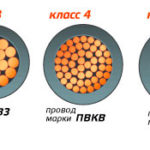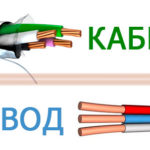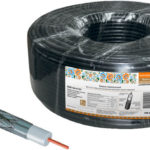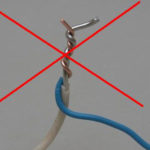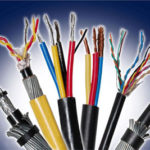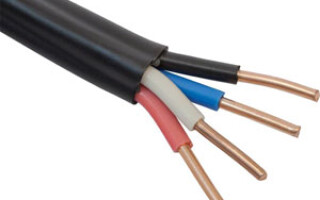When planning electrical work in a house or apartment, the question may arise as to what is better: copper or aluminum wiring?
In this article we will figure out what material should be used when wiring of electrical cable in living quarters and consider the pros and cons of copper and aluminum conductors.
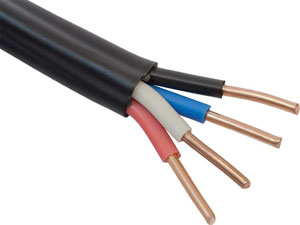
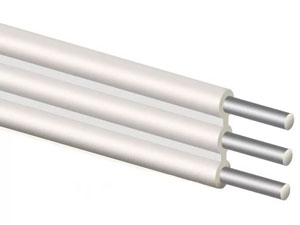
Contents
Comparison of aluminum and copper wiring in terms of technical characteristics
In order to understand the differences between copper and aluminum, you need to consider and compare their technical characteristics.
Properties of conductors
The basic electrical properties of conductor material are their specific electrical resistance, thermal conductivity, and temperature coefficient of resistance. Mechanical properties include weight, strength, elongation before rupture, and service life in normal operation.
Electrical resistivity
Electrical resistivity - is a material's ability to resist electric current as it flows through a conductor. This characteristic is calculated using the formula:
Ρ = r⋅S/l,
where l is the length of the conductor, S is the cross-sectional area, r is the resistance.
For comparison:
| Conductor material. | Specific electrical resistance, Ohm-mm²/m |
|---|---|
| Copper | 0,0175 |
| Aluminum | 0,0300 |
As you can see from this table, copper has a lower resistivity and therefore heats less and conducts electricity better.
Thermal conductivity
Thermal conductivity - is a property of a conductor that shows the amount of heat that passes per unit time through a layer of matter. To calculate electrical cable this characteristic is quite important, because the safe operation of electrical wiring depends on it. The higher the thermal conductivity of the material, the less it heats up and gives off excess heat better.
For comparison:
| Conductor material | Thermal conductivity, W/(m-K) |
|---|---|
| Copper | 401 |
| Aluminum | 202—236 |
Temperature coefficient of resistance
When various materials are heated, their electrical conductivity changes. A characteristic that indicates this change is called the temperature coefficient of resistance (RTD). This value is detected with a special TKC meter and the average value of this coefficient is taken.
Please note! The temperature coefficient of resistance - is the ratio of the relative change in resistance to a change in temperature. It is called α.
By comparison:
| Conductor material | Temperature coefficient of resistance, 10-3/K |
|---|---|
| Copper | 4,0 |
| Aluminium | 4,3 |
The lower the temperature coefficient of resistance, the greater the stability of the conductor.
Weight and electrical conductivity of a conductor
Copper is much heavier than aluminum. It has a density of 8900 kg/m³, while aluminum has a density of 2700 kg/m³. This means that a copper conductor will be 3.4 times heavier than a similarly sized aluminum wire.
It is important to understand that the electrical conductivity of copper is more than 50% higher than that of aluminum and, therefore, in order for an aluminum conductor to carry the same current, it must be 50% larger than a copper conductor.
Therefore, it is more efficient to use a copper conductor than an aluminum cable.
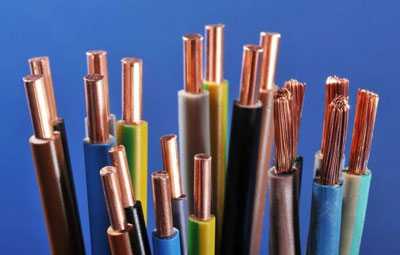
Elongation before breaking and strength
Electrical cable can operate in various modes and operating conditions, so when selecting a conductor it is very important to consider its resistance to mechanical stress. Tensile strength is a characteristic that takes into account the strength of the material and the resistance to breaking load.
For comparison:
| Conductor material | Tensile strength, kg/m² |
|---|---|
| Copper | 27 – 44,9 |
| Aluminium | 8 – 25 |
From the analysis of the table, it is clear that copper is highly resistant to mechanical stress and significantly outperforms aluminum in this characteristic.
Service Life
The service life of electrical wiring depends on the operating conditions and the environment. It is generally accepted that the service life of aluminum cable in normal operating conditions is 20-30 years. At the same time, copper wiring serves much longer and its service life can reach up to 50 years.
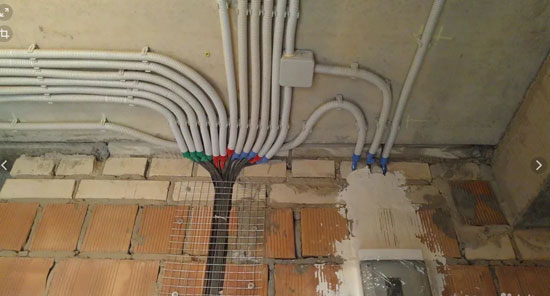
What material for electrical wiring should be chosen for the apartment
In Soviet times, it was common to use aluminum wiring in residential buildings. This was due to the fact that residential houses did not have high loads on the electrical network due to low power and a small number of electrical appliances. With the development of technology and the appearance of a huge variety of powerful electrical appliances that are used in homes, the quality requirements and materials for electrical cables have increased significantly. In today's reality, the device of wiring made of aluminum material is practically never used, since according to the PUE Electrical wiring in residential areas should be made of copper!
Interesting fact! Not many people know, but just before aluminum wiring, in Stalin's times, copper wiring was used in apartments.
Advantages and disadvantages of aluminum electrical wiring
The main advantages of electrical wiring made of aluminum are:
- Low weight: The density of aluminum is lower and therefore its weight is lower. When laying simple networks with a lot of cables, but low loads - it will be a convenient advantage.
- Low priceAluminum is several times cheaper than copper, so products made of this material also have a low price.
- Resistance to oxidation: in the absence of contact with the environment, it serves for a long time and does not deteriorate from oxidation.
The disadvantages of this material include:
- Low indicators on electrical conductivity - Aluminum has a high resistivity and heats up when the electric current passes through it. Therefore, the PUE prohibits the use of such cable in home networks with a conductor cross section of less than 16 mm².
- Poor connection - Due to oxidative processes and heating/cooling cycles, aluminum cable joints gradually deteriorate, which can lead to faulty electrical wiring or short circuits.
- Brittleness of conductors - such cables break easily when heated, which also very often leads to malfunctions.
Advantages and disadvantages of copper wiring
Copper is approved for use and widely used for the device of electrical wiring in residential and industrial buildings. It surpasses many materials in electrical performance and is second only to silver.
The advantages of copper cables are:
- High electrical and thermal conductivity - Copper has a relatively low resistance and effectively conducts electric current, has a high efficiency, and does not heat up significantly with the right cross-section of the cable.
- Resistance to corrosion - copper conductors can operate under all operating and environmental conditions, last a long time and are virtually immune to corrosion.
- Resistant to mechanical stress - copper electrical wiring is strong, ductile and flexible.
- flexible and easy to install - Copper wires are very flexible and easy to install at different angles and connect to sockets and switches.
The main disadvantage of copper is its high cost. But it should be understood that in the production of such a critical type of work, as installation of wiring is very important safety and durability. Therefore, despite its cost, copper wiring quickly pays off and with proper operation serves for a very long time without repair and malfunction.
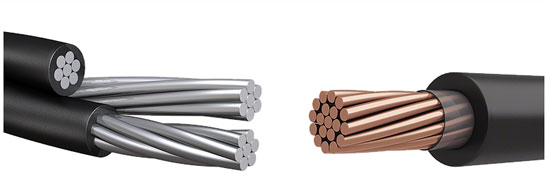
Is it worth replacing the old aluminum wiring?
This question can be answered with confidence and unambiguously: yes, definitely worth it! The use of old aluminum wiring under today's modern loads on the electrical grid is not only inefficient, but also not safe. Moreover, according to the PUE, aluminum wires can not be used when installing house wiring. Therefore, if there is a possibility to change the electrical wiring, it is necessary to change it to copper with the correct calculation, sizing and the number of electrical lines.
Electrical work is a case where you can not save on the quality of materials. The proper selection and calculation of materials depends on the safety of people and the proper operation of electrical appliances in the house.
If you still decided to leave the old electrical wiring, then you should redo the switchboard, limit the power and protect each line from exceeding the load of 16A (this will allow you not to worry about the fact that at some point the wiring will overheat and catch fire).
Even though copper wiring is much more expensive than aluminum wiring, in the long run it pays off and does not cause problems for the user.
Related articles:
